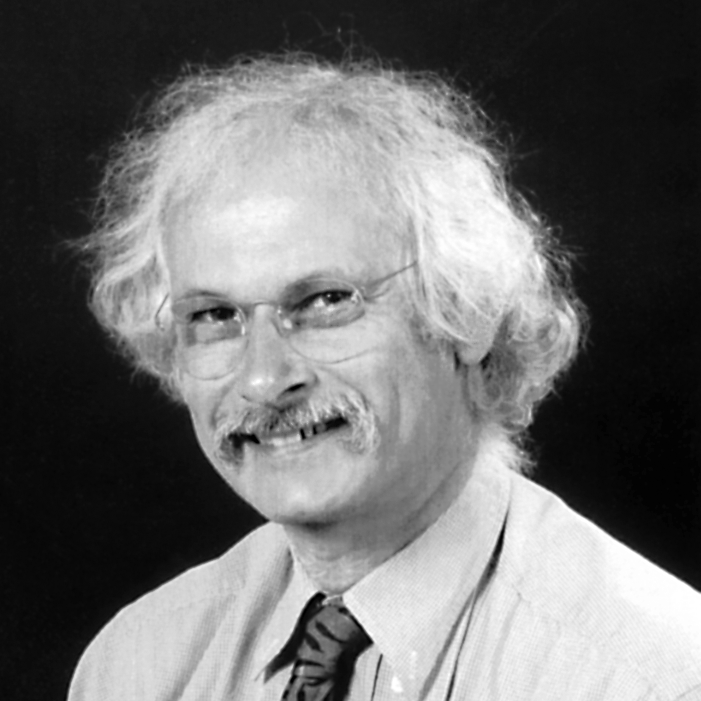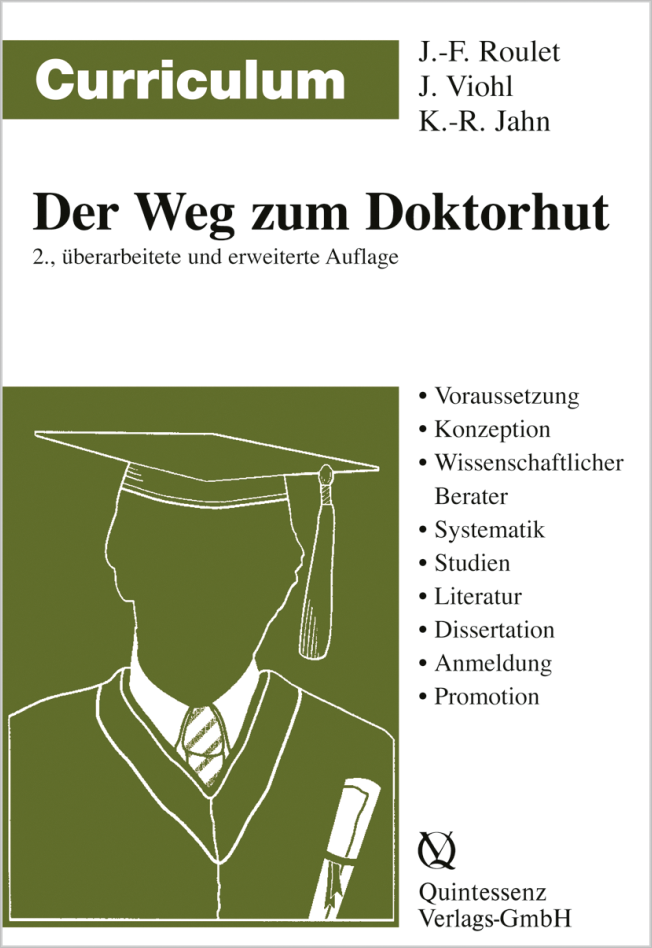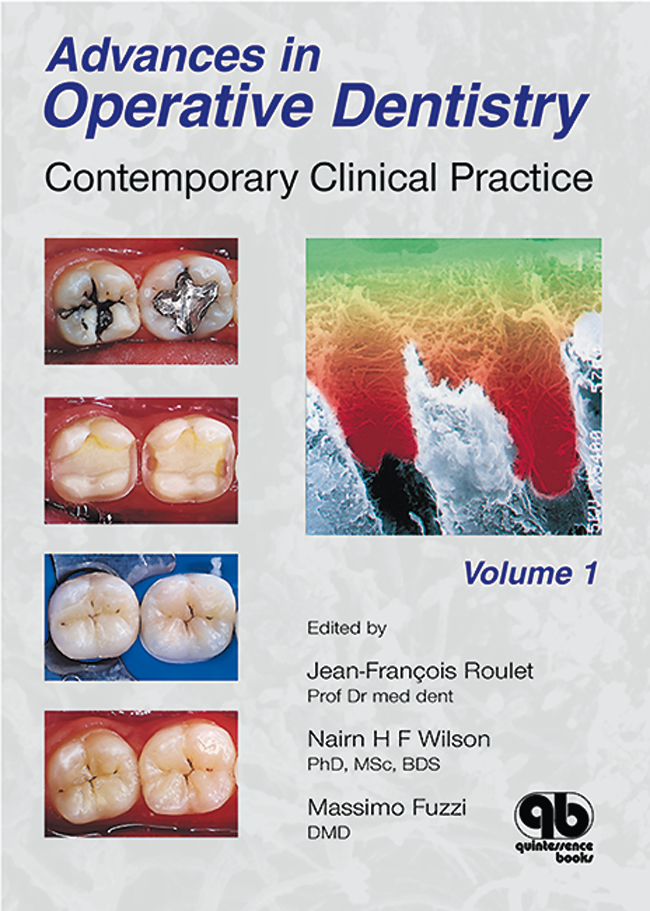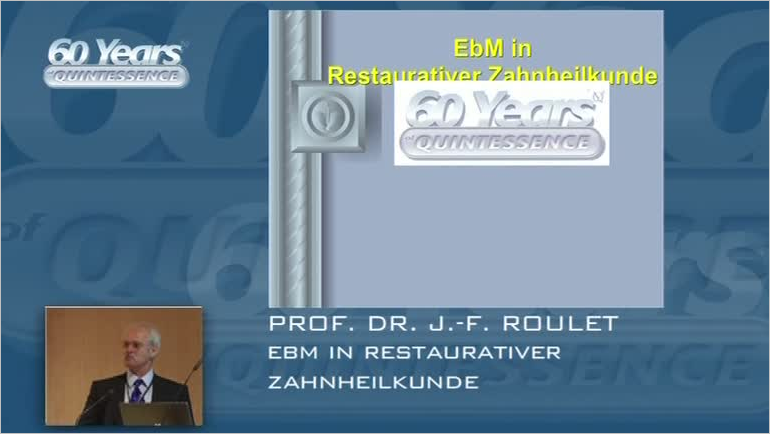The Journal of Adhesive Dentistry, 1/2022
Open Access Online OnlyResearchDOI: 10.3290/j.jad.b2916451, PubMed-ID: 3541644713. Apr. 2022,Seiten: 195-202, Sprache: EnglischPires-de-Souza, Fernanda de Carvalho Panzeri / Tonani-Torrieri, Rafaella / Geng Vivanco, Rocio / Arruda, Carolina Noronha Ferraz de / Geraldeli, Saulo / Sinhoreti, Mário Alexandre Coelho / Roulet, Jean-FrancoisPurpose: This study evaluated the effect of incorporating different concentrations of biosilicate in an experimental self-etch adhesive (SE).
Materials and Methods: Biosilicate microparticles (0, 2, 5, and 10 wt%) were incorporated into the primer, and degree of conversion (DC) and wettability were tested (one-way ANOVA, Tukey’s test, p < 0.05). The two best concentrations were selected (2% and 5%) for µTBS evaluation. Sound human molars (n=20) were sectioned into quarters and randomly assigned to 4 experimental groups: 1. experimental SE + 0% biosilicate (Exp0%; negative control); 2. experimental SE + 2% biosilicate (Exp2%); 3. experimental SE + 5% biosilicate (Exp5%); 4. AdheSE (Ivoclar Vivadent, positive control). After adhesive application, Filtek Z350 (3M Oral Care) composite was built up incrementally to 5 mm. Each quarter tooth was sectioned into sticks (0.9 mm2) and stored in distilled water (37°C) for 24 h, 6 months, or 1 year. After storage, sticks were submitted to µTBS (0.75 mm/min). The Ca:P ratio was analyzed using scanning electron microscopy (SEM) and energy-dispersive x-ray spectroscopy (EDS). Data were analyzed using two-way ANOVA with Bonferroni’s correction, with statistical siginificance set at p < 0.05. Fracture patterns were observed under a digital microscope and adhesive interfaces with transmission electron microscopy (TEM).
Results: Exp2% presented the highest DC (p < 0.05), Exp5% exhibited the lowest µTBS (p < 0.05), and adhesive failures were predominant in all groups. TEM suggested remineralized areas in Exp2% and to a lesser degree in Exp5%. Exp2% and Exp5% showed a higher Ca:P ratio after aging (p < 0.05).
Conclusion: The incorporation of biosilicate microparticles can improve the properties of self-etch adhesives. It increased the DC of the experimental adhesive as well as mineral deposition. However, the adhesive properties are concentration dependent, as a higher concentration of microparticles can adversely affect the mechanical properties of an adhesive.
Schlagwörter: degree of conversion, wettability, bond strength, bioactive glass-ceramic, self-etch adhesive
Deutsche Zahnärztliche Zeitschrift, 2/2019
WissenschaftDOI: 10.3238/dzz.2019.0126-0133Seiten: 126, Sprache: DeutschRoulet, Jean-François / Hussein, Hind / Abdulhameed, Nader F. / Shen, ChiayiBestimmung des In-vitro-Verschleißes von 2 bioaktiven Komposits (Alkasites, welche pH-abhängig Ionen freisetzen) und einem Glasionomerzement.
Schlagwörter: Alcasit, Glasionomerzement, In-vitro-Verschleiß, Smart-Komposit
DZZ International, 1/2019
Open Access Online OnlyOriginal ArticlesDOI: 10.3238/dzz-int.2019.0024-0030Seiten: 24, Sprache: EnglischShen, Chiayi / Abdulhameed, Nader F. / Hussein, Hind / Roulet, Jean-FrançoisObjective of the study:
to measure the in vitro wear of two bioactive smart composite restorative materials and one glass ionomer cement.
Materials and methods:
The smart composites Activa (Pulpdent) and Cention N (Ivoclar Vivadent) and the glass ionomer cement Fuji IX (GC) were applied into aluminum sample holders, pressed against a glass plate and stored in water for 3 weeks after curing. The samples were subjected to 400,000 load cycles of 49 N in the CS-4 chewing simulator (Mechatronik) against steatite antagonists and subjected to 4,440 thermocycles from 5 °C to 55 °C. Samples were evaluated with replicas after 5,000, 10,000, 20,000, 40,000, 60,000, 80,000, 100,000, 120,000, 160,000, 200,000, 240,000, 280,000, 320,000, 360,000 and 400,000 cycles with a laser scanner (LAS-20, Mechatronik) and the Geomagic software (wear volume). The data was analyzed with ANOVA and Tukey test. Selected wear facets were analyzed with a scanning electron microscope (SEM).
Results:
The increase in wear was almost linear and after 60,000 cycles significantly different depending on the material (Activa Cention N Fuji IX). After 400,000 load cycles the following wear was measured: Activa 1.571 mm3, Cention N 2.455 mm3 and Fuji IX 5.622 mm3. The wear of the antagonist was slight and in the reverse order (p 0.001): Fuji IX 0.021 mm3, Activa 0.091 mm3 and Cention N 0.126 mm3. SEM analysis showed pores in the powder-liquid systems. The composite and their antagonists had scratched surfaces, something that was not seen on the glass ionomer cement.
Discussion:
The bioactive composites that were tested had wear values comparable to the modern hybrid composites determined by the authors with the identical test method. The lesser wear of Activa in comparison to Cention N can be explained by the fact that the latter material is designed as a powder-liquid system with manual mixing.
Conclusion:
Based on their wear behavior the tested bioactive smart composites are suitable for posterior fillings (as an amalgam replacement) while the great wear to the glass ionomer cement confirms this indication (non load-bearing class I and II fillings).
University of Florida, College of Dentistry, Department for Restorative Dental Sciences, 1395 Center Drive, Gainesville FL 32608 USA: Prof. Dr. Jean-François Roulet, Dr. Hind Hussein BDS, Dr. Nader F. Abdulhameed BDS. MS. PhD Cand., Chiayi Shen Ph.D.
Schlagwörter: alcasites, glass ionomer cement, in-vitro-wear, smart composites
The Journal of Adhesive Dentistry, 1/2019
DOI: 10.3290/j.jad.a41997, PubMed-ID: 30799473Seiten: 67-76, Sprache: EnglischCastellanos, Mauricio / Delgado, Alex Jose / Sinhoreti, Mario Alexandre Coelho / de Oliveira, Dayane Carvalho Ramos Salles / Abdulhameed, Nader / Geraldeli, Saulo / Roulet, Jean-FrançoisPurpose: To evaluate the light transmittance of ceramic veneers of different thicknesses and verify their influence on the degree of conversion, color stability, and dentin bond strength of light-curing resin cements containing different photoinitiator systems.
Materials and Methods: Experimental resin cements were fabricated containing camphorquinone and amine (CQ-amine), TPO, Ivocerin (IVO), or TPO and Ivocerin (TPO-IVO). All photoinitiators were characterized by UV-Vis spectrophotometry. Disk-shaped lithium disilicate ceramic specimens that were 0.4, 0.7, and 1.5 mm in thickness were prepared using IPS e.max Press (Ivoclar Vivadent, shade LT/A2). Light transmittance through each specimen was measured using spectrophotometry. Specimens of each cement (n = 10) were made in a custom-designed mold and were light cured through each glass-ceramic disk using a multiwave LED (Bluephase G2, Ivoclar Vivadent). CS was evaluated using spectrophotometry before and after artificial aging with UV light. DC was evaluated using FTIR-spectroscopy. Dentin µSBS was evaluated using 0.75-mm-thick specimens that were light cured under the same protocol (n = 10). All data were submitted to two-way ANOVA and Tukey's test (α = 0.05; β = 0.2).
Results: CQ-amine cements showed the highest color changes (p 0.05) due to increased yellowing when compared to the amine-free cements (p 0.05). However, all cements showed a significant color change after aging when cured through ceramics up to 1.5 mm thick (p 0.05). The TPO-IVO cement showed the highest DC and the IVO cement showed a similar DC when compared to the CQ-amine cement. The TPO cement presented the lowest DC (p = 0.0377). No differences in mean dentin µSBS were found among the cements, except for the TPO cement, which presented a lower mean dentin µSBS (p = 0.0277).
Conclusion: Amine-free cements containing Ivocerin and TPO seem to be a better alternative to CQ-amine cements, while not reducing either DC or dentin µSBS of amine-free cements. However, CQ-amine and amine-free cements still seem to change color over time.
Schlagwörter: dental photoinitiators, ceramics, dental cements
The Journal of Adhesive Dentistry, 2/2018
DOI: 10.3290/j.jad.a40659Seiten: 173, Sprache: EnglischBreschi, Lorenzo / Blatz, Markus / Roulet, Jean-FrançoisInformation OverloadThe Journal of Adhesive Dentistry, 5/2017
DOI: 10.3290/j.jad.a39276, PubMed-ID: 29152619Seiten: 395-400, Sprache: EnglischSilame, Francisca Daniele Jardilino / Geraldeli, Gizele de Pádua / Sinhoreti, Mário Alexandre Coelho / Pires-de-Souza, Fernanda de Carvalho Panzeri / Roulet, Jean-Francois / Geraldeli, SauloPurpose: To compare the dentin microtensile bond strength (µTBS) and the Knoop hardness of bulk-fill and conventional restorative composites in box-shaped Class I cavities using different insertion techniques.
Materials and Methods: Forty box-shaped Class I preparatons 4 mm deep were performed in the pulp chamber of sound human third molars. The restorations were made using either a conventional microhybrid (Z250, 3M ESPE) or bulk-fill (Tetric EvoCeram Bulk-fill, TCBF) composite using two incremental thicknesses: 2 mm or 4 mm (n = 10). After 24-h water storage, the restorations were sectioned. The first slice (0.7 mm thick) taken from a proximal surface was submitted to the Knoop hardness (KHN) test at five depths from the occlusal cavosurface to the pulpal line angle. Sticks were fabricated from the remaining sections and tested for dentin microtensile bond strength (µTBS). Means were analyzed using two-way ANOVA and Tukey's test (p 0.05).
Results: Higher (p 0.05) µTBS resulted when both composites were restored with 2-mm increments, with no significant difference between materials (p > 0.05). Higher (p 0.05) KHN means were found when 2-mm increments were used, with no significant differences (p > 0.05) between the materials. When the teeth were restored with one bulk increment (4 mm), the deeper layers presented lower KHN means (p 0.05) starting at 2 mm for Z250 and 3 mm for TCBF.
Conclusion: The 2-mm increment restorations in box-shaped cavities yielded higher µTBS and microhardness for conventional and bulk-fill composites.
Schlagwörter: bond strength, bulk-fill composites, hardness, restorative dental composites
The Journal of Adhesive Dentistry, 5/2016
DOI: 10.3290/j.jad.a37044, PubMed-ID: 27796376Seiten: 454, Sprache: EnglischRoulet, Jean-François / Özcan, MutluWhile you work ...Parodontologie, 3/2016
Seiten: 247-248, Sprache: DeutschFriedmann, Anton / Roulet, Jean-FrancoisThe Journal of Adhesive Dentistry, 5/2015
DOI: 10.3290/j.jad.a35012, PubMed-ID: 26525007Seiten: 427-432, Sprache: EnglischKumagai, Rose Yakushijin / Zeidan, Leonardo Colombo / Rodrigues, Jose Augusto / Reis, André Figueiredo / Roulet, Jean-FrançoisPurpose: To evaluate the microtensile bond strength (μTBS) of a bulk-fill low-stress resin-based composite to dentin from gingival walls of Class II MOD cavities.
Materials and Methods: Class II MOD cavities were prepared in 44 human molars with the distal and mesial proximal boxes 4 and 6 mm deep, respectively. Eight experimental groups (n = 11) were obtained by a factorial design including 1. "composite" in two levels: a bulk-fill low-stress composite (SureFil SDR Flow, Dentsply Caulk) and a conventional composite (Filtek Z350 XT, 3M ESPE); 2. "filling technique" in two levels: bulk-fill (Bf) and incremental (In); and 3. "depth" in two levels: 4 mm and 6 mm in order to create different polymerization conditions. Twenty-four hours after placement of restorations, teeth were sectioned into beams with a cross-sectional bonded area of approximately 1 mm2. Bonded beams obtained from the gingival walls of the proximal boxes were tested in tension at a crosshead speed of 1 mm/min. Data were submitted to a 3-way ANOVA followed by a post-hoc Tukey's test (p 0.05).
Results: ANOVA failed to identify significant differences for the triple and double interaction between factors. However, significant differences were observed for the factors "composite" and "filling technique" (p 0.05). SDR presented significantly higher μTBS values for bulk and incremental filling techniques (p 0.05), and the incremental filling technique presented significantly higher μTBS values for both composites (p 0.05).
Conclusion: It can be concluded that the bulk-fill flowable composite SDR may improve the bond strength to the gingival walls of Class II MOD cavities.
Schlagwörter: tensile strength, bulk-fill composite, filling technique
The Journal of Adhesive Dentistry, 4/2015
DOI: 10.3290/j.jad.a34786, PubMed-ID: 26369304Seiten: 371, Sprache: EnglischRoulet, Jean-François





